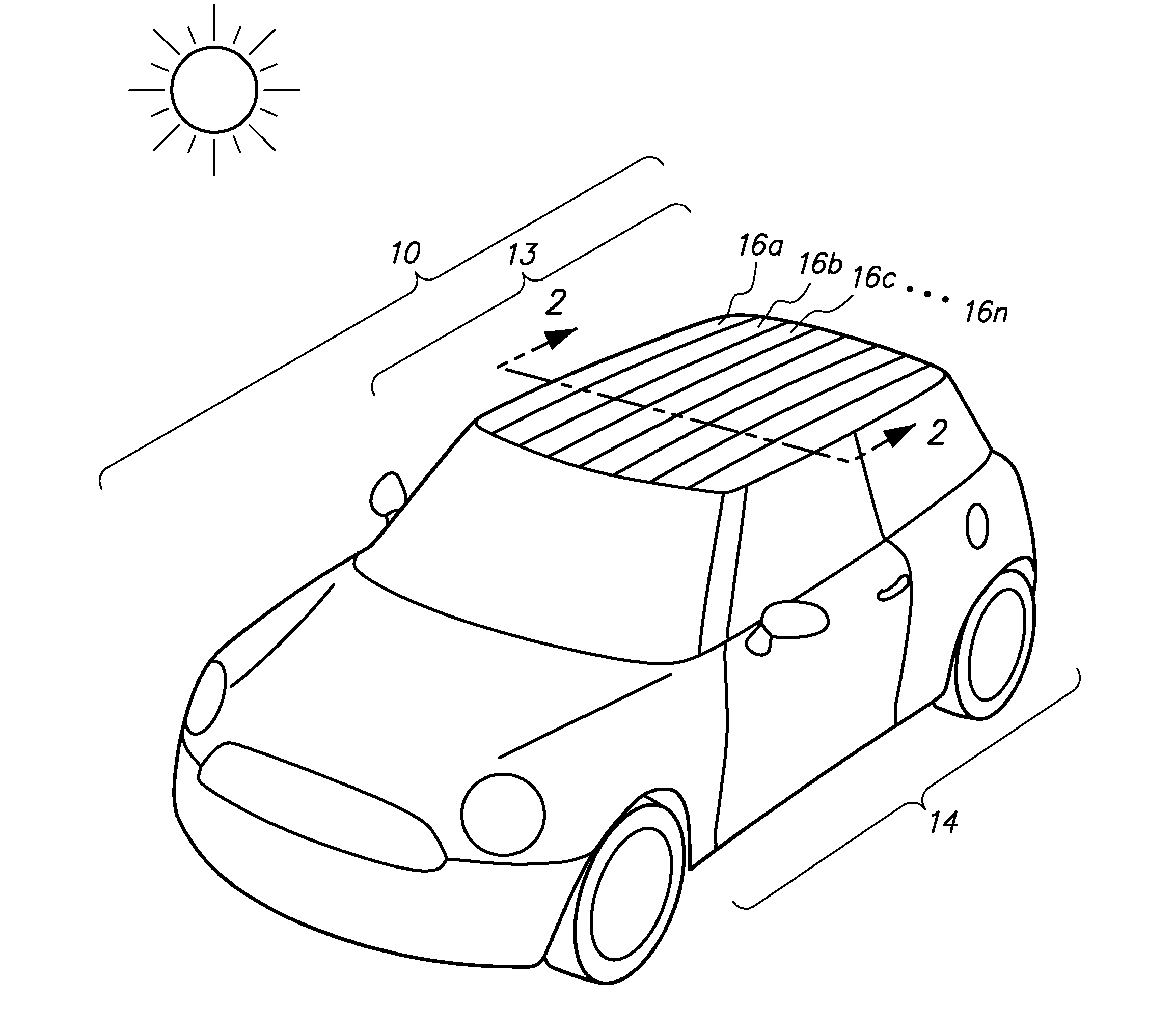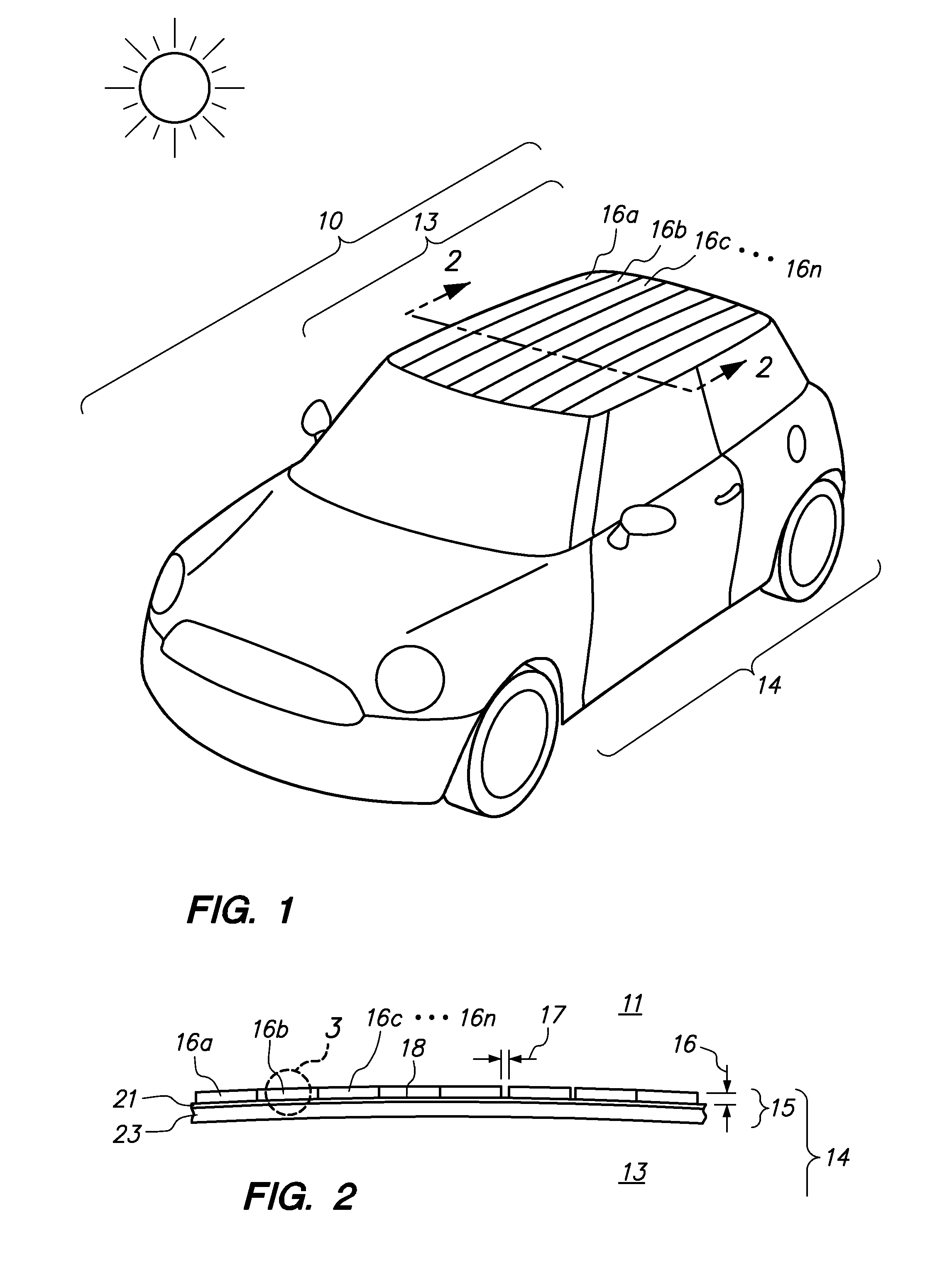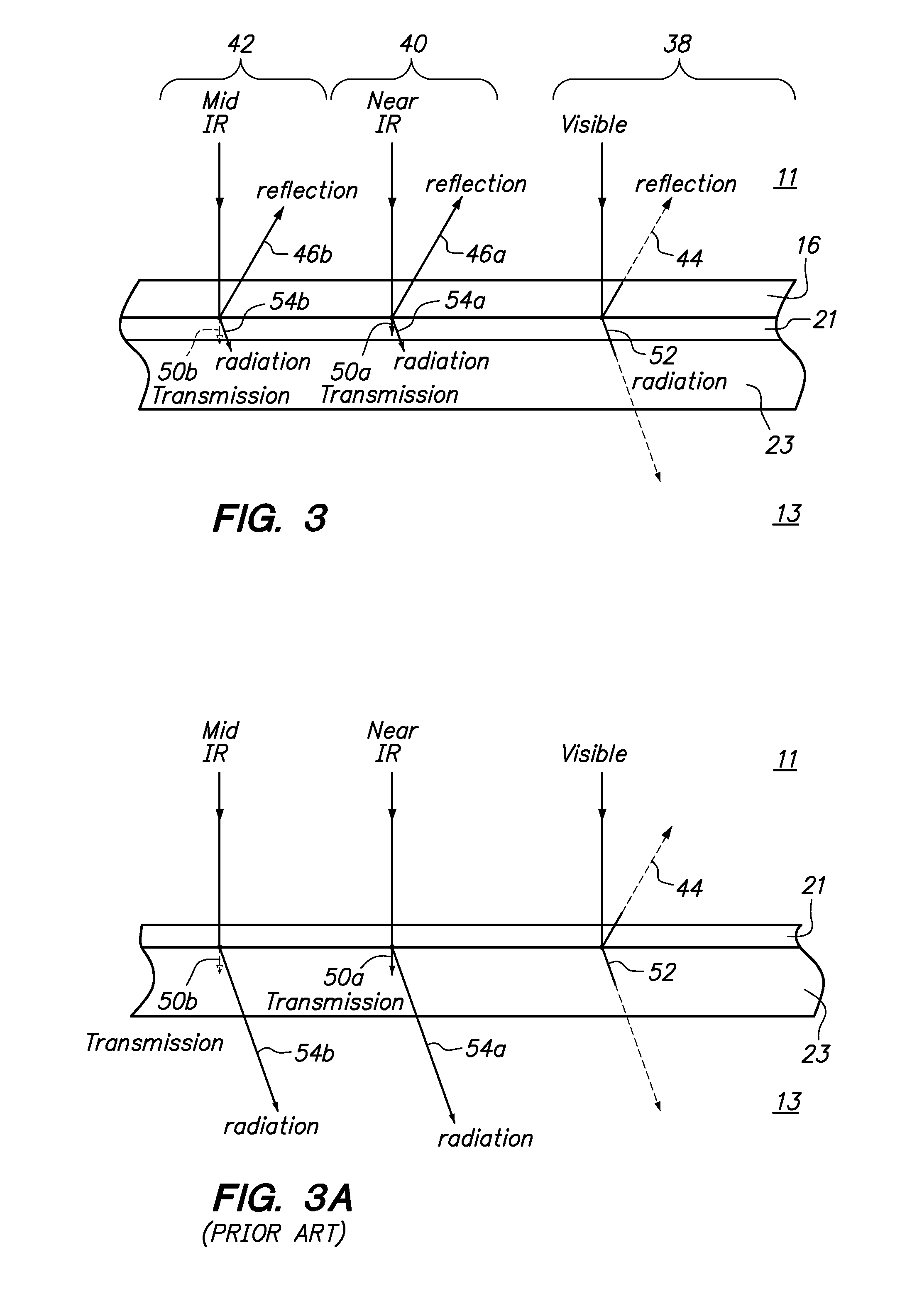[0012]A vehicle is provided having a high efficiency solar
control system. The solar
control system may comprise a metallic panel which is coated with paint. A film may be mounted to the exterior side of the paint, namely, the side closer to the environment. The metallic panel of the vehicle may be any portion of the vehicle such as the roof, hood,
trunk, door or any other surface area upon which the sun's rays are exposed. The film may have
high transmission of light in the
visible range such that the color of the paint may be transmitted or seen through the film. Also, the film may reflect a high percentage of light in the near
infrared range and the mid infrared range back into the environment. As such, the solar load on the automobile is reduced by the amount of solar radiation in the near infrared range and the mid infrared range reflected back into the environment. Preferably, the film is mounted to the roof of the vehicle such that the solar load on the cabin of the automobile is reduced by the amount of reflected infrared radiation.
[0013]The film may additionally have a plurality of sacrificial
layers which have a
high transmission value with respect to the
visible range and the near and mid infrared ranges. The topmost sacrificial layer may be removed or peeled away when it has been unacceptably degraded due to environmental elements (e.g., chips, oxidation, etc.) thereby exposing a fresh new topmost layer. Additionally, the additional sacrificial
layers mitigate oxidation of a silver layer embedded within the film. In particular, the film may be mounted to a painted surface of the vehicle. As such, one side of the film does not allow
diffusion of oxygen into the film since oxygen cannot diffuse through the painted surface and underlying metallic panel. On the other side of the film (or the silver layer(s)), a thick stack of sacrificial layers may be formed. Although oxygen may be diffused through the sacrificial layers, such diffusion of oxygen through the sacrificial layers may be slowed down by increasing the thickness of the sacrificial layers. Either or both the number of sacrificial layers may be increased or decreased as appropriate or the thickness of each of the sacrificial layers may be increased or decreased to bring the rate of
oxygen diffusion to an acceptable level. The silver layer is disposed between the glass and the thick stack of sacrificial layers which protects the silver layer from oxidation.
[0015]The film may comprise an infrared reflecting layer defining an interior side and an exterior side. The interior side of the infrared reflecting layer may be attached to the exterior side of the paint layer. The infrared reflecting layer may have an embedded infrared reflecting core which comprises one or more layers of silver and one or more layers of
dielectric for reflecting infrared radiation. The silver layer and
dielectric layer may alternate. The film may further comprise one or more protective layers removeably attached to the exterior side of the infrared reflecting layer for mitigating oxidation of the silver layer and for providing a sacrificial top layer which can be removed when the top layer is damaged due to UV
exposure or oxidation. The protective layers may be peelably adhered to one another. An exterior side of each of the protective layers may have an
ultraviolet light absorbing hard coat.
[0019]A method for reducing solar radiation load within an automobile is also disclosed. The method may comprise the steps of providing a film for reflecting infrared radiation wherein the film comprises an infrared reflecting layer and one or more protective layers. The infrared reflecting layer may define an interior side and an exterior side. The infrared reflecting layer may have an embedded infrared reflecting core which comprises one or more layers of silver and one or more layers of
dielectric for reflecting infrared radiation. The one or more protective layers may be removeably attached to the exterior side of the infrared reflecting layer for mitigating oxidation of the silver layer and for providing a sacrificial top layer which can be removed when the top layer is damaged due to UV
exposure or oxidation. The method may further comprise the step of attaching an interior side of the infrared reflecting layer to an exterior side of the automobile.
[0024]The film may comprise an infrared reflecting core which comprises one or more layers of silver and one or more layers of dielectric for reflecting infrared radiation, the infrared reflecting core defining opposed first and second sides, a first protective layers attached to the first side of the infrared reflecting layer wherein the first protective layer has a first thickness, a second protective layer attached to the second side of the infrared reflecting layer and the paint layer wherein the second protective layer has a second thickness and the first thickness is greater than the second thickness, and wherein the first and second protective layers provide structural support to the one or more silver layers and the thicker first protective layer mitigates oxidation of the one or more silver layers caused by
oxygen diffusion through the first protective layer.
 Login to View More
Login to View More 


